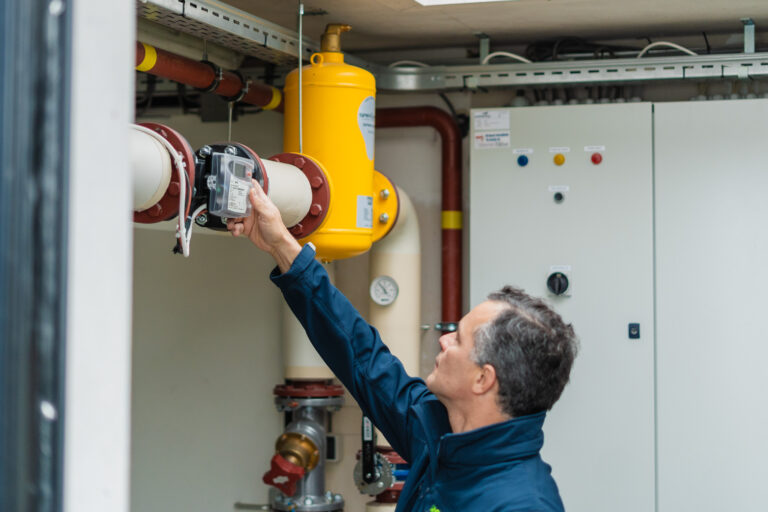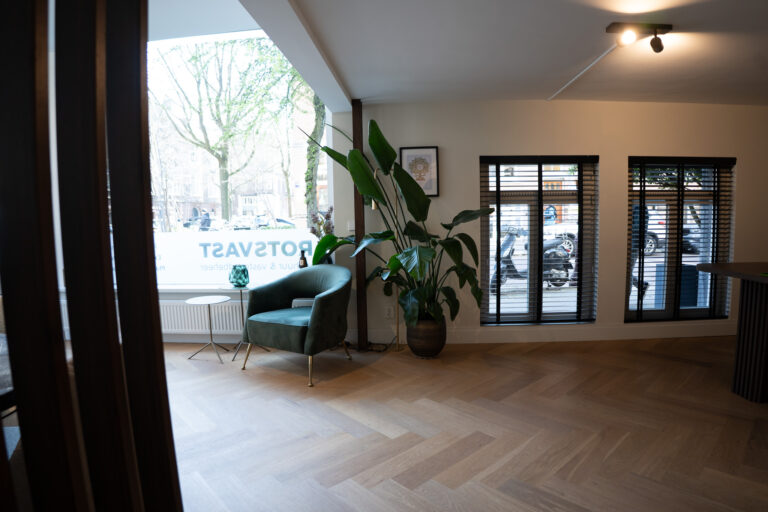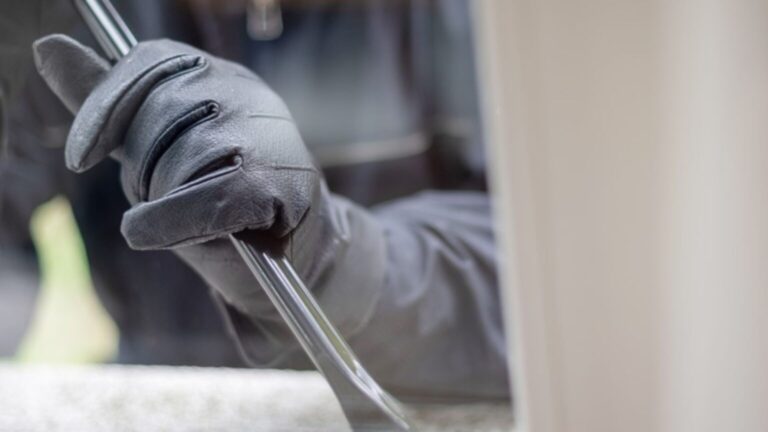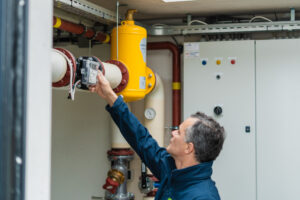CV regulation
- 20 June, 2025
- Leestijd: 2 min.

Room thermostat
The desired temperature in a room can be set with a room thermostat. When you indicate to the thermostat that you want to increase the temperature in a room, the central heating is intervened. In the central heating boiler, the circulation pump and the burners are put into operation. The water is heated by this and will flow to the radiators via the pipes. The gas supply to the central heating boiler is stopped when the set temperature is almost reached. The circulation pump will be switched off after approximately 15 minutes if there was no additional heat demand in the meantime.
A disadvantage of the room thermostat is that the room where the sensor is located determines the temperature of all other rooms.
Clock thermostat
Many homes now have a clock thermostat that is equipped with a time mechanism. This will cause the room to have a higher or lower temperature at a set time. Because the central heating boiler does not continue to fire for long periods of time, it saves energy. In addition, there is more comfort because you do not have to come home to a cold house.
Weather dependent control
Another way to regulate the heat is the weather-dependent control. In this case, the heat production of the central heating boiler depends on several factors. Namely the temperature in the room, the requested temperature and the outside temperature. In this way, the temperature in the central heating boiler is lowered when the outside temperatures are high. Compared to the room thermostat, the weather-dependent control saves more energy. The heating line is the relationship between the outside temperature and the requested central heating temperature.
In addition, with weather-dependent control, the rooms are not dependent on the reference room. Each room can have its own temperature setting by a thermostatic radiator valve.
Because the central heating boiler is always ready to deliver the requested temperature, even when all radiator valves are closed, the pressure on the pump increases. This can cause energy to be lost or a malfunction to occur.
Setting an economical but comfortable heating curve is also a lengthy process, because all seasons have to pass first.








